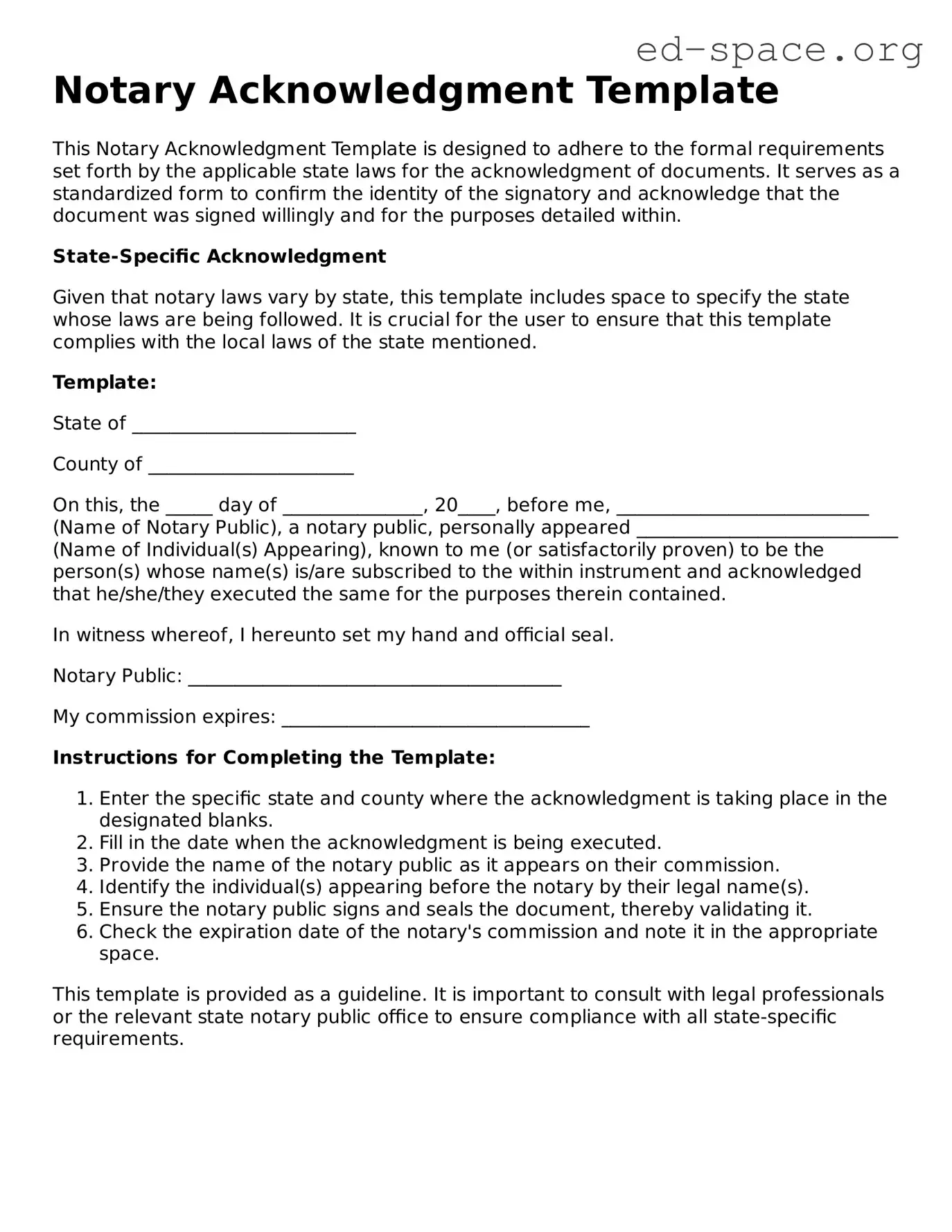What is a Notary Acknowledgement form?
A Notary Acknowledgement form is a document that a notary public completes to certify that a signer has acknowledged that they are signing a document voluntarily for its intended purpose. Essentially, it’s a way to prevent fraud, ensuring the person signing the document is who they say they are and that they understand what they’re signing.
Why is a Notary Acknowledgement necessary?
It’s needed to provide a layer of trust and legality to various documents. By ensuring that the signature on your document is genuine, a Notary Acknowledgement helps to confirm the integrity and authenticity of the document, whether it's a legal contract, a deed, a power of attorney, or other significant documents.
What types of documents require a Notary Acknowledgement?
Many documents, especially those that carry legal significance or require formal verification, need a Notary Acknowledgement. These can include estate planning documents, financial agreements, real estate deeds, powers of attorney, and other legal contracts. It’s always a good idea to check if your document needs to be notarized for it to be valid.
Does a Notary Acknowledgement provide legal advice?
No, a Notary Acknowledgement does not provide legal advice. A notary public is not authorized to give legal advice unless they are also licensed attorneys. Their primary role is to verify the identity of the signer and witness the signing, ensuring that it’s done willingly and under no duress.
Can I get a document notarized without a Notary Acknowledgement form?
Yes, but it depends on the type of notarization you need. Apart from acknowledgements, there are other forms of notarization such as jurats, where the signer must swear to the content of the document. However, for many official or legal documents, an acknowledgement is required to validate the signer’s identity and voluntariness.
How does one complete a Notary Acknowledgement form?
Completing a Notary Acknowledgement involves a few steps. Firstly, the document signer must appear before the notary public and present valid identification. The notary will then fill out the acknowledgement form, indicating that the signer has acknowledged that they are signing the document freely. The notary public then signs it, affixes their seal, and sometimes notes the date of the notarization.
Is a Notary Acknowledgment the same in every state?
No, notary laws and requirements can vary from state to state, and so can the content and format of a Notary Acknowledgement. It’s important to check the specific requirements in your state or consult with a notary public to ensure that you are using the correct form and procedure.
Can a Notary Acknowledgement be done electronically?
Yes, in many cases, notarization, including Notary Acknowledgements, can be done electronically thanks to the growing acceptance of electronic signatures and the rise of remote online notarization (RON) services. However, the availability and legality of electronic notarization differ by state, so it's important to verify local laws and find a notary who is authorized to perform electronic notarizations.
What happens if a Notary Acknowledgement is filled out incorrectly?
If a Notary Acknowledgement is filled out incorrectly, it might invalidate the notarization or cause legal complications down the line. It's crucial that both the notary and the signer review the acknowledgment carefully during the notarization process. If an error is discovered after the fact, the document might need to be notarized again, with a new, correctly completed acknowledgement form.
